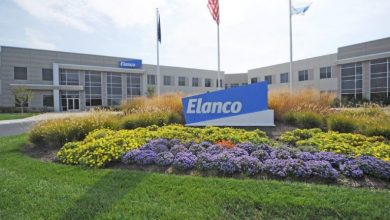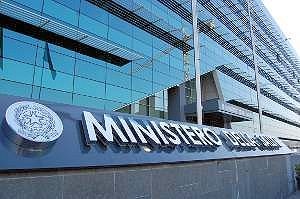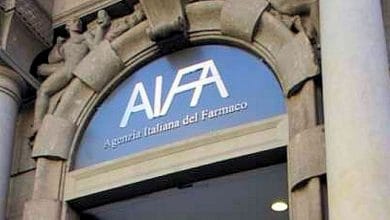
Are pharmaceutical bonds safe? Based on three case studies in the pharmaceutical sub-sector, we would like to show that M&A activity can produce the most varied outcomes for investors in IG corporate bonds: the good, the bad and the ugly.
 Lately, we touched on the topic of recent mergers and acquisitions (M&A) activity in North America exceeding pre-crisis volumes. While difficult to quantify, this surge in corporate action can reasonably be assumed to have been one of the main forces behind the widening of credit spreads seen in the US dollar investment grade (IG) universe this year. Many IG companies have taken advantage of low interest rates to make equity buyouts, increasing leverage and risking a credit rating downgrade. The new bond issues launched on the market to finance these operations have accentuated the upward pressure on credit spreads of outstanding bonds.
Lately, we touched on the topic of recent mergers and acquisitions (M&A) activity in North America exceeding pre-crisis volumes. While difficult to quantify, this surge in corporate action can reasonably be assumed to have been one of the main forces behind the widening of credit spreads seen in the US dollar investment grade (IG) universe this year. Many IG companies have taken advantage of low interest rates to make equity buyouts, increasing leverage and risking a credit rating downgrade. The new bond issues launched on the market to finance these operations have accentuated the upward pressure on credit spreads of outstanding bonds.
Healthcare companies have participated in the M&A frenzy with particular enthusiasm. According to Reuters, the overall volume of deals in this segment is expected to exceed $600 billion this year, dwarfing the previous annual record of about $390 billion, set in 2014. Based on three case studies in the pharmaceutical subsector, we would like to show that M&A activity can produce a variety of outcomes for investors in IG corporate bonds: the good, the bad and the ugly.
Let's start on a positive note. Investors in IG bonds are likely to make a profit if they own bonds in a company that is acquired amicably by a (significantly) higher rated company. Take for example the case of Allergan, Plc (AGN), best known as the company that makes Botox. The company in its current form is the result of a long series of mergers, the last of which dates back to March 2015, when Actavis, Plc acquired Allergan, Inc. for approximately 66 billion US dollars. The deal's financing package included one of the largest USD corporate offerings in history (USD 21 billion in several tranches), including AGN 3.8% 2025s. The securities were issued at a higher asset swap spread (ASW) than the US IG pharmaceutical index and have subsequently underperformed the sector average (see chart below). However, when news broke in late October that Pfizer and AGN had entered friendly merger talks, AGN's spreads contracted sharply. The transaction, valued at around US$160 billion and intended to create the world's largest pharmaceutical company, has not been completed, but there is a good chance that AGN, rated BBB-, will merge with Pfizer ( AA/A+), a highly positive event for AGN's credit. As a result, AGN 3.8% 2025s stock has outperformed the pharmaceutical index by approximately 30 basis points, in terms of ASW spread, over the past month.
 But these immediately successful corporate actions are the exception. IG companies (typically established and large) tend to be the buyer rather than the target, which often penalizes their bondholders, at least in the short term. Such was the case with then-BBB+ company Celgene (CELG) which acquired Receptos for more than $7 billion to boost its portfolio of anti-inflammatory and immunological medicines. Following the announcement of the deal in mid-July, outstanding USD CELG bonds (CELG 3.625% 2024s) widened relative to the US IG Pharmaceuticals Index. After quoting at an extra spread of around 10 bps above the sector average for the first half of the year, the premium has jumped to almost 25 bps. In late July, the issuance of new USD-denominated notes to finance the transaction, coupled with a downgrade to BBB due to rising leverage, led to a second surge in the existing bond spread differential to around 35bps above than the industry average. CELG bonds then briefly outperformed the pharmaceuticals index before the spread premium started to widen again, not least due to further M&A appetite expressed by company executives.
But these immediately successful corporate actions are the exception. IG companies (typically established and large) tend to be the buyer rather than the target, which often penalizes their bondholders, at least in the short term. Such was the case with then-BBB+ company Celgene (CELG) which acquired Receptos for more than $7 billion to boost its portfolio of anti-inflammatory and immunological medicines. Following the announcement of the deal in mid-July, outstanding USD CELG bonds (CELG 3.625% 2024s) widened relative to the US IG Pharmaceuticals Index. After quoting at an extra spread of around 10 bps above the sector average for the first half of the year, the premium has jumped to almost 25 bps. In late July, the issuance of new USD-denominated notes to finance the transaction, coupled with a downgrade to BBB due to rising leverage, led to a second surge in the existing bond spread differential to around 35bps above than the industry average. CELG bonds then briefly outperformed the pharmaceuticals index before the spread premium started to widen again, not least due to further M&A appetite expressed by company executives.
We talked about the good and the ugly, now let's move on to the bad. It's not easy to find a better example of Mylan's (MYL) failed attempt to acquire Perrigo (PRGO) this year. A detailed chronicle of all the ups and downs of this odyssey would be well beyond the scope of this post. In a nutshell, MYL approached PRGO with an unsolicited takeover offer in the spring of 2015. It then attempted to convince its own shareholders and those of PRGO of the benefits of this proposed transaction, while defending against a hostile takeover attempt by of Teva, its rival in the generic drug sector. Using the poison pill defensive strategy, MYL was able to lock down Teva in July. Meanwhile, the MYL-PRGO situation became more and more of a struggle. Even after MYL increased its offer, PRGO management continued to oppose the acquisition with all its might. In September, Perrigo's chairman and CEO, Joseph C. Papa, sent an open letter to Mylan's chairman, Robert J. Coury, in which he called MYL's offer “glaringly inadequate” and “value-destroying,” stressing to consider "some very worrying corporate governance values of Mylan". Rating agencies have expressed concerns about the negative credit effects of the transaction, and S&P has even questioned the IG nature of MYL, placing the BBB- rating under negative watch.
Related news: Apple, Pfizer, Nike and the others: the buyback hangover
NB: The investment grade they are indicators of the reliability of shares or other financial instruments deemed trustworthy by institutional investors. They are identifiable through their rating (Moody's, Standard & Poor's and Fitch), since, according to the various national legislations, there is a minimum rating limit below which institutions cannot trade.
Generally, in the case of equities, they are companies that have good balance sheets, sizeable capitalization, and are considered among the best in their industry.
In the case of fixed income, the BBB rating is usually considered as the lower limit. Below this rating, securities are defined as speculative grade
Implicitly, the investment grade classification implies a medium-high quality of the financial instrument.
Investment grade are therefore configured as particularly safe and low-risk investments. Obviously, since the rating is a dynamic classification, the set of investment grades can change. A stock that falls in valuation is called a falling angel.
If you buy a single bond (bond) you have to be careful that the issuer does not show a worsening of the balance sheet indicators. The issuing company must therefore have adequate capital, level management, a good generation of profits and available liquidity. An element to take into consideration is also the country in which you operate: the countries with the best economic fundamentals also offer greater security of corporate investment. Among the other risks to keep in mind, there is also the liquidity of the corporate issue, which must be well traded on the secondary market. Otherwise, if there was a need, it becomes more difficult to get out of the investment.





